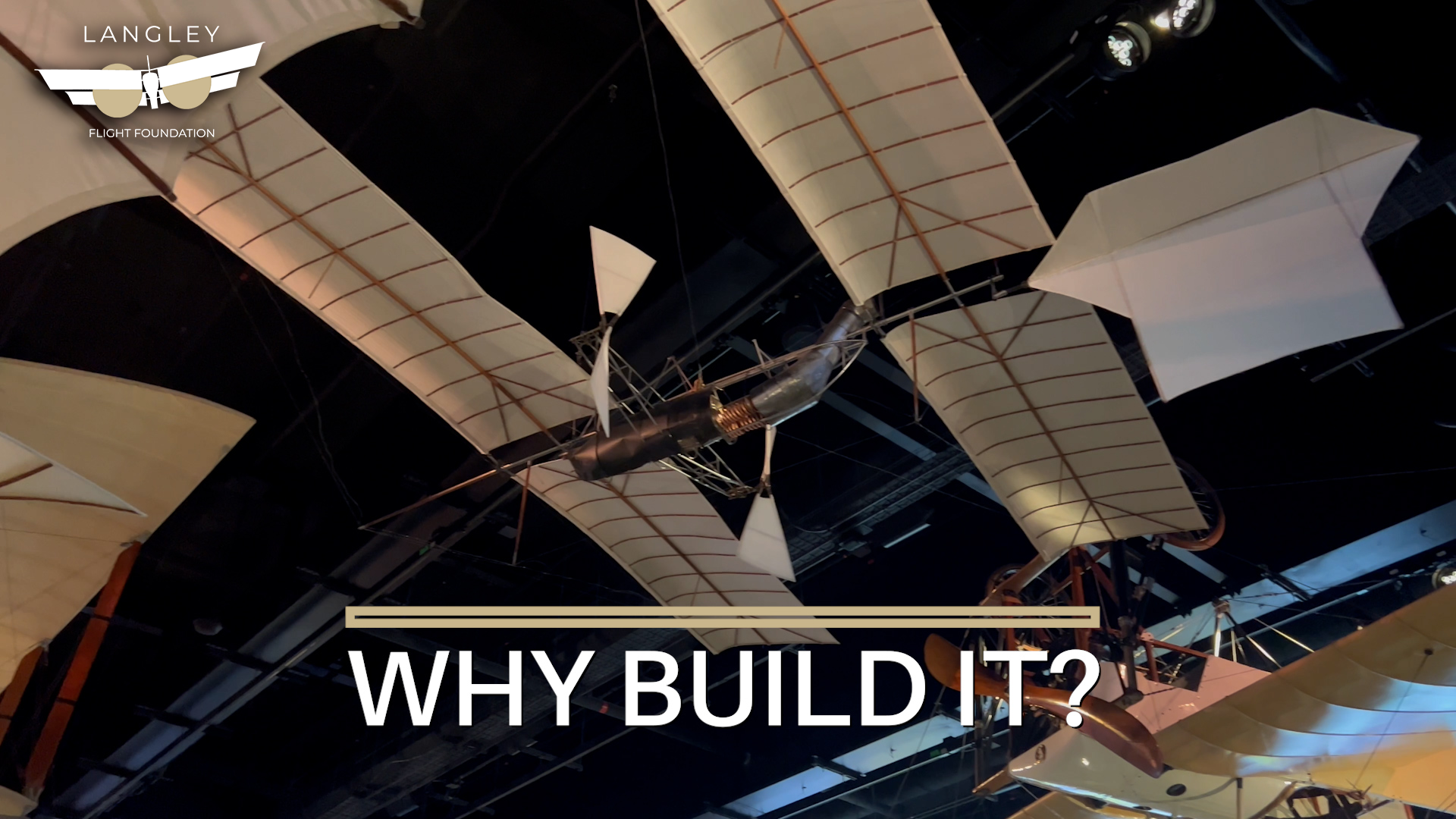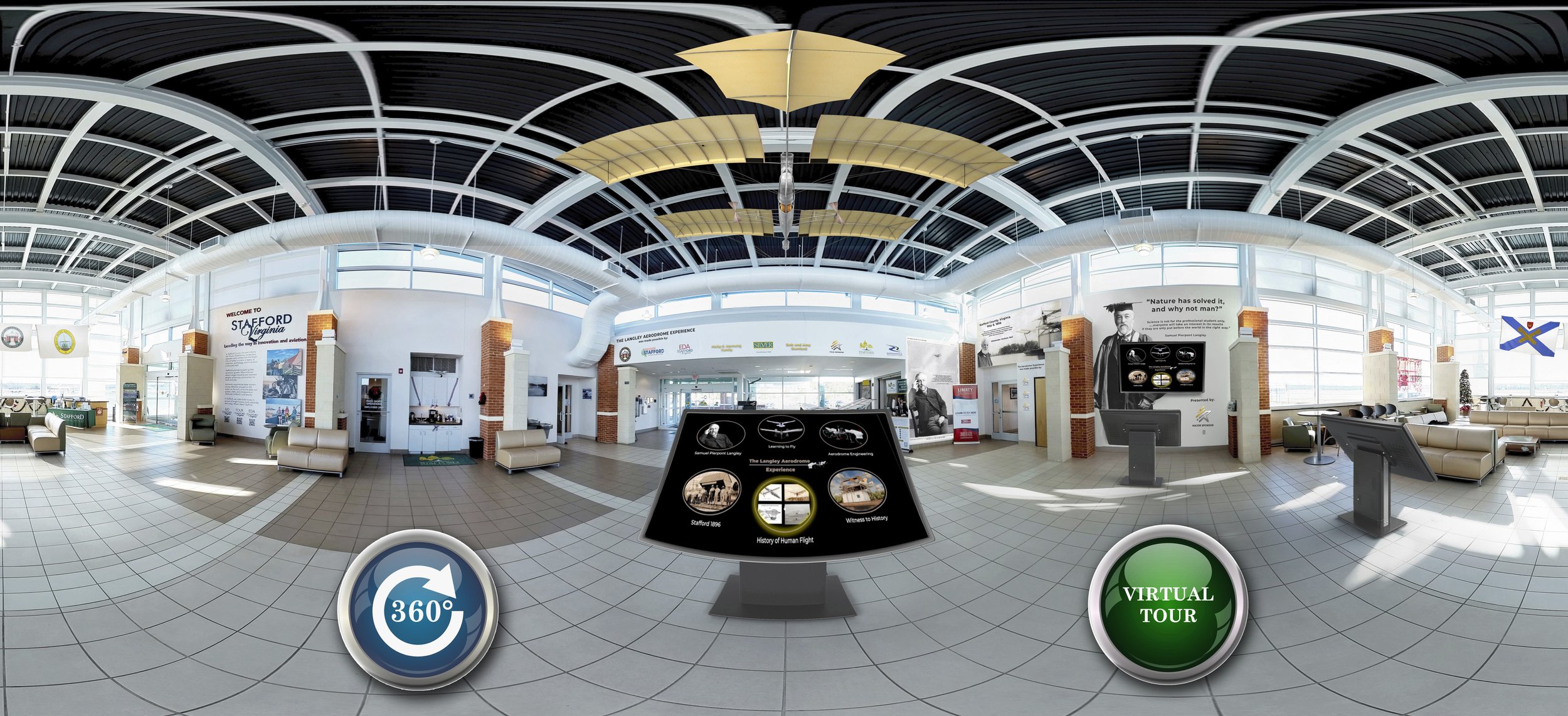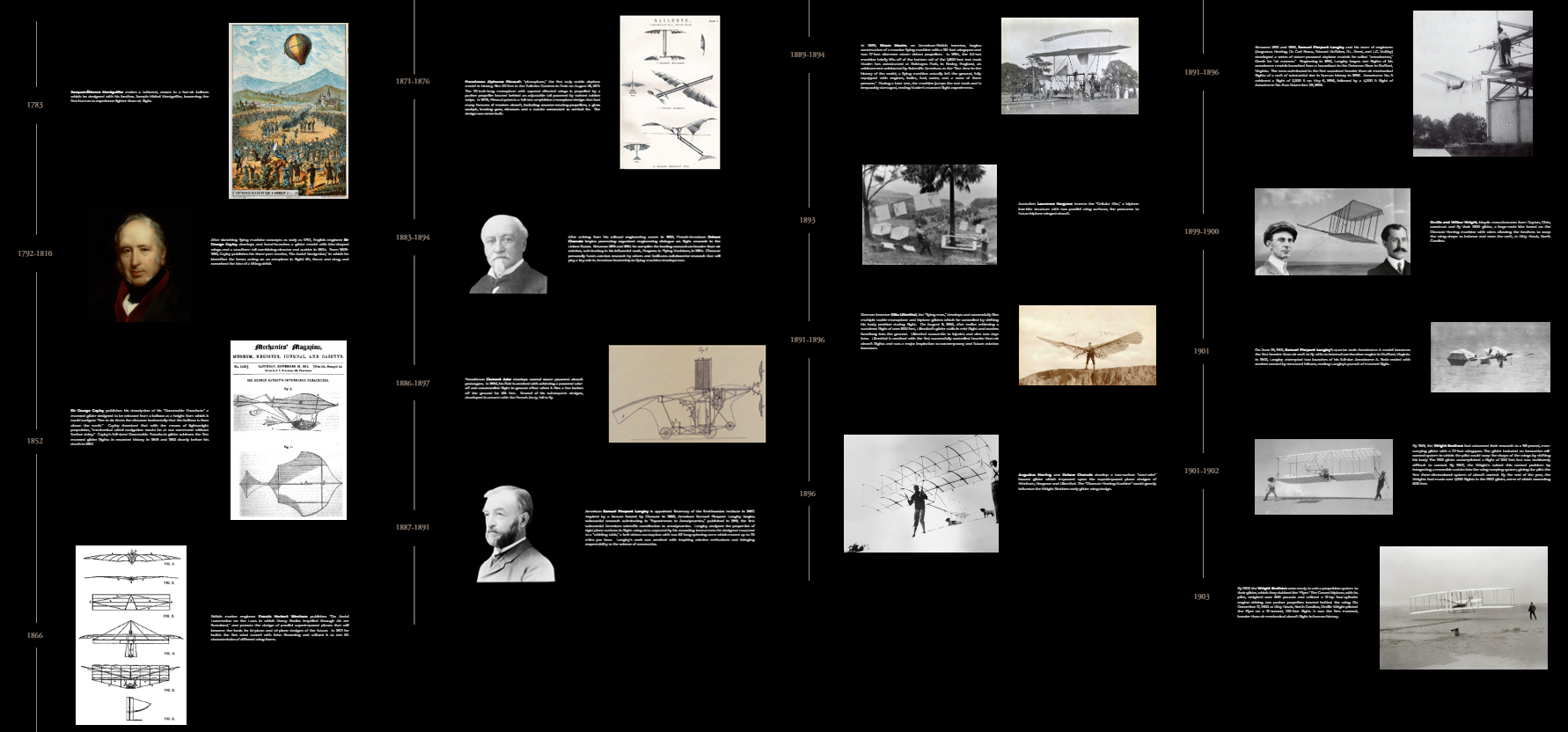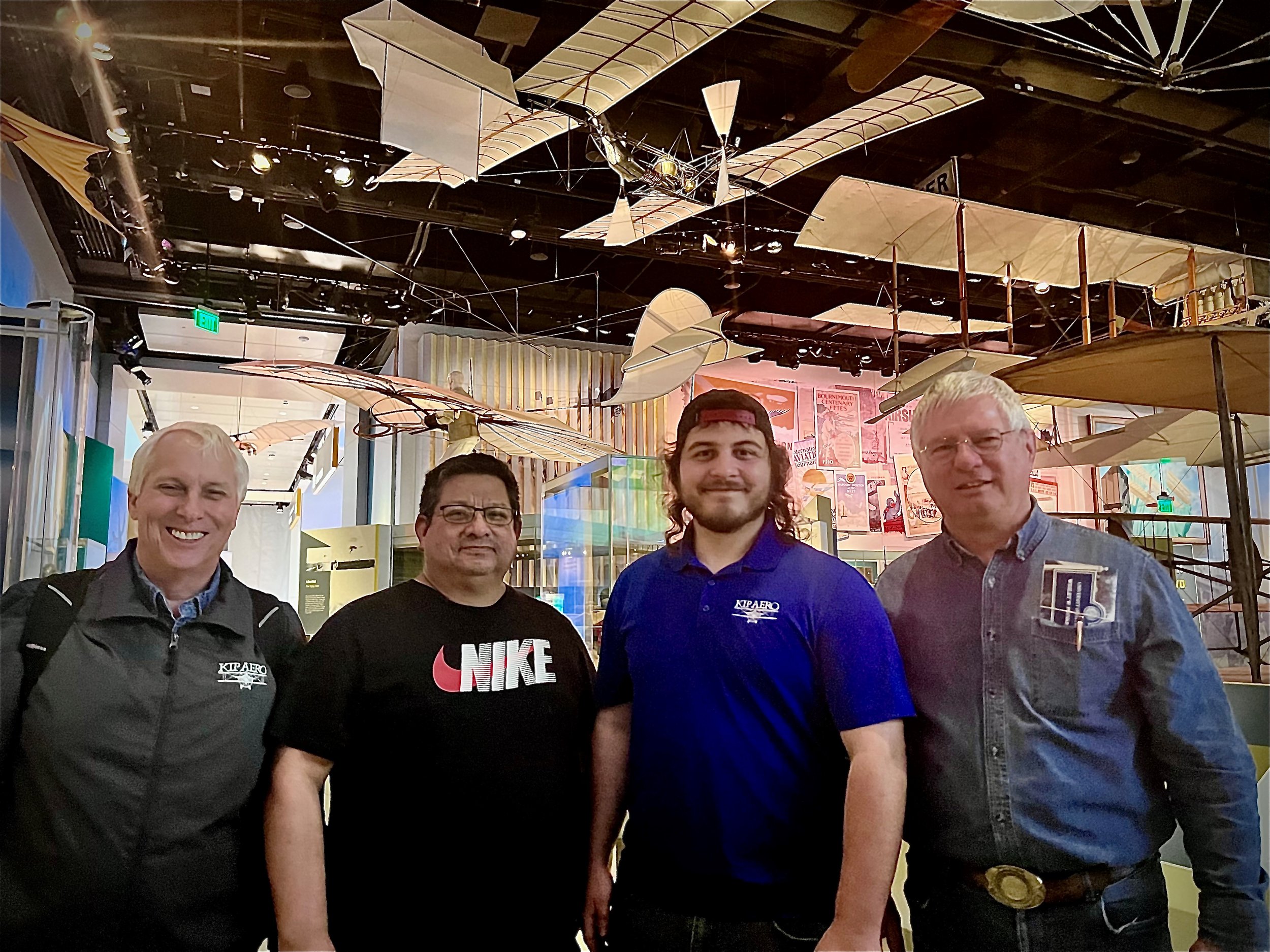The Langley Aerodrome Experience is Open!
Featuring a Reproduction of
Samuel Pierpont Langley’s Aerodrome No.5
The World’s First Successful Airplane in Stafford County!
The first steam-powered airplane constructed in 128 years!
The triumph of science and innovation over antiquated 19th century assumptions!
Where:
Stafford Regional Airport Terminal
95 Aviation Way
Fredericksburg, VA 22406
When:
Free to the Public!
Open Daily
8:00 am - 6:00 pm
The Langley Aerodrome Experience is the cornerstone of the Foundation's mission to educate the public on Virginia's rich aviation history, to encourage students to pursue STEM education and aviation-based careers, and to help attract new aviation-based employers and technology to Virginia and the Stafford County region.
The purpose of the project is to rescue a forgotten achievement in Virginia and U.S. history from obscurity and to use the retelling of its story to reconnect with our past, appreciate mankind's ability to change the world for good, and to inspire us all to use critical thinking and problem solving skills to tackle seemingly impossible challenges.
WHY IT MATTERS
The story of Aerodrome No. 5 is one of perseverance over antiquated scientific assumptions for the benefit of society. The Langley Aerodrome Initiative seeks to tell this story so that this inspiration can be handed down to future generations.
Virginia's historical attractions include an impressive list of pre-historic, colonial, and Civil War sites, but relatively few from Reconstruction through the turn of the 20th century. This dearth of late nineteenth century attractions suggests that Virginia ceded its early national prominence and leadership to other parts of the country after the Civil War. In addition, many of these sites struggle to gain the attention of our youth, who have grown up in a technologically advanced world.
However, Virginia has a claim to a significant leadership role in the development of aviation in the United States that has not been celebrated. Major aviation advancements have occurred in Virginia, including Professor Thaddeus Lowe's balloon reconnaissance corps during the Civil War, the training of the country's first pilots at Fort Myer in 1908, the launch of the U.S.'s first aircraft carrier, USS Langley, at Norfolk in 1924, and the training of World War II pilots at Langley Field in Hampton in the 1940's.
Perhaps the most significant, and least recognized, aviation accomplishment in Virginia was Samuel Pierpont Langley's achievement of heavier-than-air flight in 1896. Between 1894 and 1896, Langley conducted tests of his unmanned "aerodromes" culminating in a successful flight of Aerodrome No. 5 on May 6, 1896 of 3,300 feet over one minute and thirty seconds in Stafford County, Virginia. This achievement, which the Smithsonian National Air and Space Museum acknowledges as, “the world’s first successful flight of an unpiloted, engine-driven, heavier-than-air aircraft of substantial size,” occurred seven years prior to the Wright Brothers' first manned flight in 1903.
Launching the Langley Aerodrome Initiative
Why We’re Building Aerodrome No. 5
The Langley Aerodrome Experience consists of 2 primary components; an exact reproduction of Aerodrome No. 5 to be hung in the airport passenger terminal, and multiple, interactive displays located throughout the terminal for public use. A 360 tour of the conceptual design of the Langley Aerodrome Experience can be viewed by clicking the image below.
TELLING THE STORY
The Langley Aerodrome Experience includes interactive kiosks highlighting 19th century attitudes towards human flight, advances in the science of aeronautics, and the process through which humans conquered the greatest scientific mystery of the age. Modules explored in the Experience include:
Preconceptions
Preconceptions create inertia that limits the advancement of knowledge. Samuel Pierpont Langley ignored the 19th century scientific consensus that heavier-than-air flight was impossible and performed his own experiments to answer the question, “If nature solved it, why not man?”
Observational Learning
Observational Learning explains how humans mimicked nature and learned from their observations to achieve flight. This module includes 3D models of Leonardo DaVinci’s Ornithopter, Otto Lilienthal’s Glider, and Alphonse Penaud’s Planophore.
Stafford, Virginia 1896
The Stafford/Virginia 1896 module explains life in Stafford Virginia in 1896, an often neglected period in Virginia history. Through an interactive map, visitors can observe stores, schools, ports, railroads, farms, and industry, each with an audio/visual program explaining their functions compared to today.
Scientific Method
The Scientific Method module consists of an interactive 3D model of Aerodrome No. 5 allowing visitors to observe and operate the aerodrome and to understand how the scientific method was used to solve the greatest mystery of the age.
Making History
The Making History module is a first-person perspective, 3D simulation of the 1896 aerodrome flight that will allow visitors to view the history making flight from multiple vantage points and hear first person accounts from Samuel Pierpont Langley, Alexander Graham Bell, and a Stafford County eyewitness.
History of Flight
The Human Achievement of Flight module is an interactive history timeline of the significant discoveries and inventions that led to mankind conquering the sky. The timeline will highlight other Virginia flight achievements, such as the first balloon flight, Civil War balloon reconnaissance, the Wright Brothers’ training of pilots at Fort Myer, and the launch of the United States first aircraft carrier, the U.S.S. Langley, in Hampton Virginia in 1924.
Changing the World
The flight of Aerodrome No. 5 proved that heavier-than-air mechanical flight was possible, paving the way for future generations of inventors, engineers and scientists to make aviation a part of everyday life.
THE BUILDER
On December 28, 2022, the Langley Flight Foundation awarded the contract to construct our Aerodrome No. 5. to KipAero, an offshoot of Kip Motor Company that provides vintage aviation enthusiasts with the parts and expertise needed to accurately build, restore, repair and maintain vintage airplanes. KipAero’s reputation for delivering top quality, flight-worthy vintage aircraft reproductions, their highly-qualified team of machinists and technicians, and experience with constructing and operating nineteenth century steam engines and machinery were key reasons for the Foundation’s selection.
KipAero produces reproduction World War I aeroplanes, mainly the Sopwith family of flying machines, using the original factory drawings and specifications, as well as period correct wood, metal fittings, cables and hardware. The first phase of the Aerodrome project included a thorough review of all available documents to determine gaps in information which required further research, completion of such research, compilation of a list of materials and methods of construction originally used in the production of each component and identifying sources for the same, and development of the project plan. Following this work, the team procured materials, fabricated tooling and manufactured all mechanical, structural and aerodynamic components required for the project. The Aerodrome was assembled in April 2024 to ensure all elements function properly and delivered to the Stafford Regional Airport in May 2024 in time for the 128th anniversary of Aerodrome No. 5’s historic flight.
THE SITE
Aerodrome No. 5 is displayed and curated at the Stafford Regional Airport Terminal, along with exhibits showcasing Langley’s groundbreaking research which enabled him to solve one of man’s most complex engineering problems, mechanical flight. The Langley Aerodrome Initiative vision is to partner with Stafford County, Stafford County Economic Development and Tourism, Stafford Regional Airport Authority, the Stafford County Historical Society, the Smithsonian Air and Space Museum, and the Virginia Aeronautical Historical Society to produce future educational and outreach programs to engage and educate the public on the significance of Samuel Pierpont Langley’s work and Stafford County’s role in the story of human flight.
Directions
Stafford Regional Airport Terminal
95 Aviation Way
Fredericksburg, VA 22406
THE LANGLEY EXPERIENCE’S PARTNERS & SUPPORTERS
DIAMOND SPONSORS
Bob and Amy Stanford
PLATINUM SPONSORS
THE PHILIP E. HORNUNG FAMILY
GOLD SPONSORS
SILVER SPONSORS
HENDERSON CONSTRUCTION COMPANY
BRONZE SPONSORS
DAVID & TERRIE JAMES
HAMILTON PALMER



















